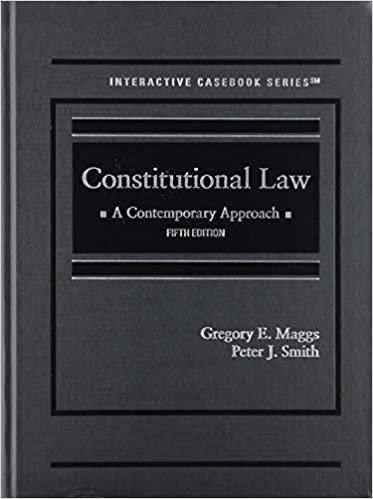Question
Please read a case below and tell me the trial results and your opinion. Case 2: Weyerhaeuser Co. v. Ross-Simmons Hardwood Lumber Co. (Reference link
Please read a case below and tell me the trial results and your opinion.
Case 2: Weyerhaeuser Co. v. Ross-Simmons Hardwood Lumber Co.
(Reference link : https://scholar.google.co.kr/scholar_case?case=16195960859151005121&q=Weyerhaeuser+Co.+v.+Ross-Simmons+Hardwood+Lumber+Co&hl=en&as_sdt=2006&as_vis=1)
Weyerhaeuser Co. owned six mills processing 65 percent of the red alder logs in the Pacific Northwest. Ross-Simmons Hardwood Lumber Co. operated a single competing mill. When the prices of the logs rose and those for the lumber fell, Ross-Simmons suffered heavy losses. Several million dollars in debt, the mill closed. Ross-Simmons filed a suit in a federal district court against Weyerhaeuser, alleging attempted monopolization under Section 2 of the Sherman Act. Ross-Simmons claimed that Weyerhaeuser used its dominant position in the market to bid up the prices of logs and prevent its competitors from being profitable. Weyerhaeuser argued that the test for predatory pricing applies to a claim of predatory bidding and that Ross-Simmons had not met this standard. From a judgment in the plaintiff's favor, affirmed by the U.S. Court of Appeals for the Ninth Circuit, Weyerhaeuser appealed.
The United States Supreme Court vacated and remanded. The test that applies to a claim of predatory pricing also applies to a claim of predatory bidding. Both predatory pricing and predatory bidding involves a company's intentional use of pricing for an anticompetitive purpose. Both actions require a company to incur a short-term loss on the possibility of later making a "supracompetitive" profit. Because a "rational" firm is unlikely to "make this sacrifice," both schemes are "rarely tried and even more rarely successful." A failed scheme of either type can benefit consumers. A plaintiff alleging predatory bidding must prove that the defendant's "bidding on the buy side caused the cost of the relevant output to rise above the revenues generated in the sale of those outputs." The plaintiff must also prove that "the defendant has a dangerous probability of recouping the losses incurred in bidding up input prices through the exercise of monopsony power."
Step by Step Solution
There are 3 Steps involved in it
Step: 1

Get Instant Access to Expert-Tailored Solutions
See step-by-step solutions with expert insights and AI powered tools for academic success
Step: 2

Step: 3

Ace Your Homework with AI
Get the answers you need in no time with our AI-driven, step-by-step assistance
Get Started


